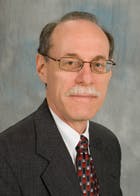Back in the 1990s, I was contacted by a lawyer representing a local sewage district and asked to be the district’s consultant and expert witness. It seemed that the board members felt that the district was being overcharged by another district in the town where the sewage was treated.
The overall sewage system consisted of an upper district (on hills) that fed sewage through four outfalls to the lower district (by the river). Each outfall had a flowmeter that was owned and operated by the lower district. Sewage and rainfall from the lower district was gravity-fed to the sewage treatment plant in the lower district. A total plant flowmeter was located at the inlet of the sewage treatment plant.
Flow from the upper district was calculated by summing the flow measurements from the four outfalls. Flow from the lower district was calculated by subtracting the upper district flow from the total plant flowmeter. Note that the flow from the lower district was not measured directly.
The operating costs of the sewage treatment plant were apportioned to the two districts based upon the measured flows. In addition, the upper district was assessed penalties when the daily flow exceeded contract limits. As the upper district expanded, this could occur when wet weather caused ground water to leak into the upper district sewage piping.
|
Related Content: |
The board members felt that something was wrong with the flowmeters because the per capita flow for the upper district (for sewage only) seemed large when compared to that of the lower district (for sewage and rainwater). Their feelings were confirmed when one day the total plant flow was a few thousand gallons more than the flow from the upper district. In other words, if the flowmeters were accurate, not only did the lower district produce no sewage during that day, but they actually consumed a few thousand gallons of sewage from the upper district.
More next month …
David W. Spitzer is a regular contributor to Flow Control magazine and a principal in Spitzer and Boyes, LLC, offering engineering, seminars, strategic, marketing consulting, distribution consulting and expert witness services for manufacturing and automation companies. He has more than 35 years of experience and has written over 10 books and 250 articles about flow measurement, instrumentation and process control.
Mr. Spitzer can be reached at 845 623-1830 or www.spitzerandboyes.com. Click on the “Products” tab to find his “Consumer Guides” to various flow and level measurement technologies.



